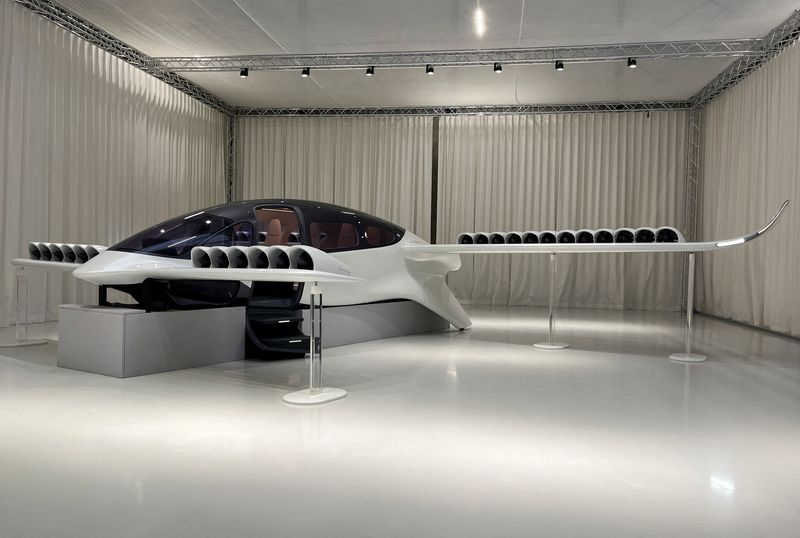WASHINGTON (Reuters) -The U.S. aviation regulator said on Wednesday it was proposing comprehensive training and pilot certification rules for flying taxis, electric vertical takeoff and landing aircraft (eVTOL), which have been touted as the future of urban air mobility.
Low-altitude urban aircraft have drawn intense global interest, with numerous eVTOL companies going public. New rules are needed because many proposed aircraft take off and land like a helicopter but fly like an airplane to their destination, the Federal Aviation Administration (FAA) said.
The FAA said its proposal conforms to International Civil Aviation Organization requirements, enabling U.S. pilots to operate in other countries.
Airlines and other companies are looking at developing transport services using battery-powered aircraft that can take off and land vertically to ferry travelers to airports or for short city trips, allowing them to beat traffic.
In May, the FAA issued an "updated blueprint" for airspace and other changes to accommodate future air taxis. Last year, it issued a proposal to update its air carrier definition to add “powered-lift” operations to regulations covering other commercial operations like airlines, charters and air tours.
The FAA said that under the blueprint, air taxi operations will begin at a low rate, similar to helicopters, and using existing routes and infrastructure such as helipads and vertiports.
The FAA has said it does not expect the first eVTOL to begin commercial operations until late 2024 or early 2025.
Last year, the FAA issued the airworthiness criteria that air taxi startup Joby Aviation must meet for its Model JAS4-1 eVTOL aircraft and Archer Aviation for its air taxi to be certified for use.

Delta Air Lines (NYSE:DAL) invested $60 million in Joby in a partnership aiming to offer passengers air taxi transport to and from airports in New York and Los Angeles within a few years
Pilots working for eVTOL manufacturers could serve as the initial cadre of flight instructors, who would then train instructors at flight schools and carriers. Alternate eligibility criteria would enable some pilots to meet flight-time experience requirements faster.
